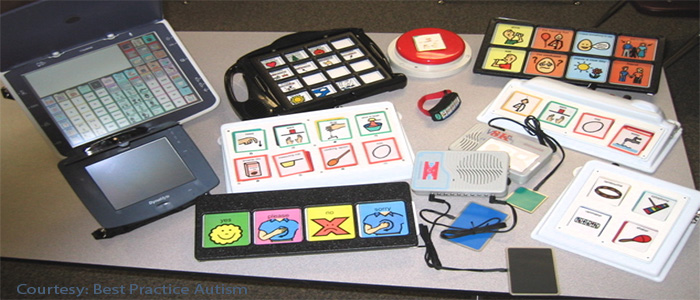According to one recent study conducted by the CDC, approximately one out of every 54 children in the United States is currently diagnosed with an autism spectrum disorder of some kind. That number breaks down to about one out of every 34 boys, and one out of every 144 girls.
The same research also indicated that early intervention – not to mention early diagnosis – is very important in terms of improving not only learning but also communication and even social skills in those affected. In fact, many kids impacted by autism benefit enormously from other types of interventions like speech and occupational therapy. Obviously, technology plays an important role in all the above.
Thanks to the almost ubiquitous position that smartphones and similar mobile devices play in our lives, technology is practically everywhere these days. It’s also an incredible boost to those with autism – not only in terms of helping them communicate with others but also in regard to creating visual schedules, assisting in decision-making, in use as motivating tools, and much, much more.
In fact, there is a wide range of different technologies that are designed to support those with autism that are absolutely worth a closer look.
Smartphone Apps Designed for Those with Autism
Based on how powerful modern-day smartphones like the iPhone are, it should come as a surprise to nobody that a lot of the technologies designed to support and empower those with autism have less to do with the hardware and are more about the software that runs on it.
Case in point: Proloquo2Go. Available as an iPhone app in the iTunes App Store, Proloquo2Go is a solution designed expressly for people on the autism spectrum who are nonverbal. It helps promote natural language development and allows those with autism to communicate with people around them not using words, but via pictures. In addition to being a great boost for autistic kids, it’s also a common tool used by families, educators, therapists, and more. It supports basic to advanced vocabularies, and it’s the type of tool that simply wouldn’t exist had smartphones not evolved to the point where they are today.
Another great example of an app that can support those with autism is called Endless Reader. Available in both the iTunes and Android app stores, it’s an app that helps teach autistic kids the words that are most important to developing their reading skills over the long term. It uses colorful monsters, exciting images and fun sounds to keep kids entertained by their lessons and, most importantly, engaged with the material as it unfolds in front of them.
Assistive Technology’s Relationship with Those Who Have Autism
One of the most important things to understand about kids with autism, in particular, is that they tend to process visual information far more effectively than they do auditory information. That is to say, they’re able to comprehend things easier if they receive information in the form of a picture than they would if that same information were presented in the form of an auditory command.
That, in essence, is why the type of assistive technology that is compatible with not just smartphones but also laptops and desktop computers is of critical importance. Many of us take for granted that the user experience of your average operating system is presented in a way that is easy for us to understand. People with autism don’t necessarily see the world in the same way, and assistive technology helps to re-configure and re-contextualize the user experience in a way that makes more sense given the needs of the user.
Many of these assistive technology solutions present navigation options not in the form of words, but pictures. Those with autism can reach out and select a picture that best represents the action they’d like to take next. Sometimes, these pictures are also accompanied by words. The device itself may even say and repeat the word whenever the companion picture is selected. An obvious example of this would be if you tapped a picture of a piece of pizza, the device would say the word “pizza.”
These types of visualization tools are very important for those with autism, especially when it comes to tasks like creating daily schedules and routines. Research has found that this type of visual learning not only provides a receptive communication system that the person with autism can feel more comfortable with, but it also goes a long way towards increasing understanding as well. Based on this, it can even help the person learn new things and expand their interests.
In the end, it’s easy for any of us to say that technology has played an important role in our life – but that is especially true for those dealing with autism. Not only does technology help them better understand the world around them, but it also helps them interact with that world as well – which may very well be the most important benefit of all.


















Add comment